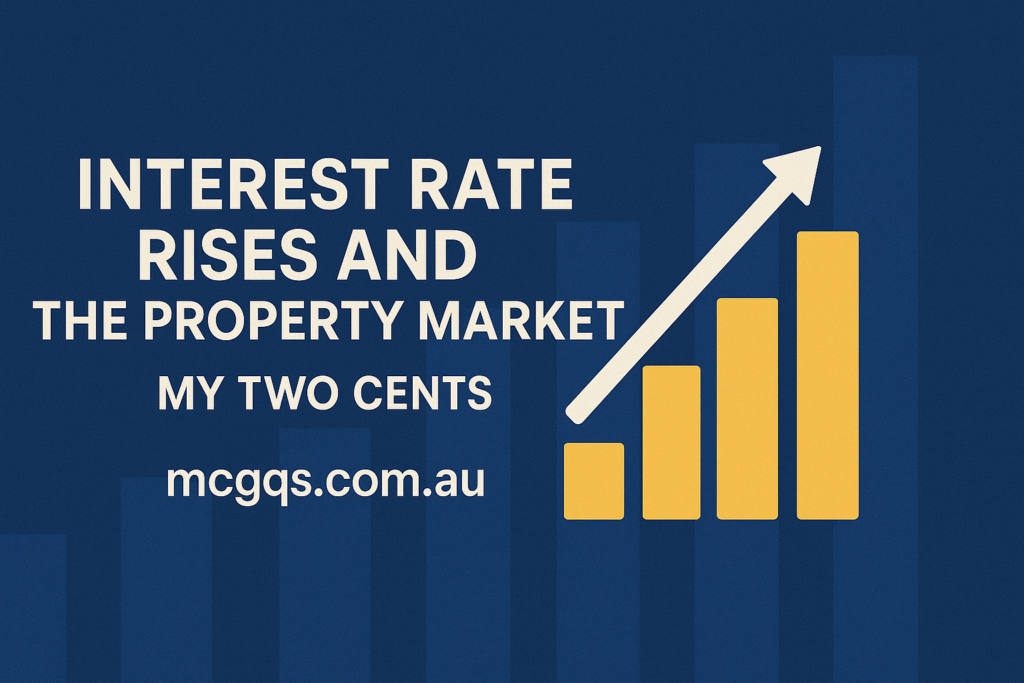Interest Rate Rises and The Property Market, My Two Cents.

The RBA has increased rates for the first time in more than 11 years. That’s significant because as the RBA says itself, many households have never experienced rising interest rates. They’re also going to go up further, likely in the next few months. Before we panic though, let’s get some context.
As a guide, if you have a $500,000 principal and interest home loan at a rate of 2.29% p.a. on a 30-year loan term, your repayments were $1,922 a month.
When the bank passes on this 0.25% increase, you’ll pay $1,987 a month. If we tweak it all the way to a 0.75% rate increase, it’s $2,119 a month. To put it another way, the homeowner will need to find another $197 a month or say $46 bucks a week.
I say context, because for most people it’s a manageable increase that’s well within their ability to negotiate with tweaks to discretional spending.
The RBA are beginning “the process of normalising monetary conditions.” That should be a reminder that interest rates are currently not normal, they’re historically low.
I don’t doubt that this new trajectory for rates will spook property buyers and cool some of the demand, but for those with capacity willing to ignore the herd, I believe there will be plenty of opportunities to buy well in the next 12 months and see capital growth.
Rates are going up because the economy is doing well. That’s a positive thing. Sticking with the positive narrative, many mortgage holders will have continued to pay the same interest rate as rates were dropping over the last few years. On top of this, and according to the AFR in late April, residential property borrowers have squirrelled away a record $232 billion in offset accounts – an increase of nearly 15 per cent, or $30 billion – in the past 12 months to reduce their interest payments and shorten loan terms.
The main driver of higher inflation has been global interruptions to supply chains and Russia’s invasion of Ukraine has resulted in sharp increases in the prices of oil and gas, base metals and many agricultural commodities. The outcome of this conflict and the economic impacts are hard to predict.
Nationally, strong demand is putting pressure on capacity and firms are struggling to hire and retain workers. These increases in costs are resulting in price increases being passed onto consumers.
Interest rate rises will likely be slow and measured over the next 12-24 months in my view. There’s no desperate desire to be back within the 2-3 per cent target band within the next few months. The RBA expects inflation to start moderating as some of the supply disruptions are resolved and/or as prices settle at a higher level. They state that for inflation to stay high, prices need to keep increasing at a fast rate, not only settle at a high level.
I feel for the households that will struggle with another kick to their cost-of-living pressures, but most people are not over-extended, and their serviceability has been tested well over and above where we’re likely to land. Despite what may be presented in the media, there’s not going to be a property price crash and the 4 horsemen of the apocalypse will have another gap year.
